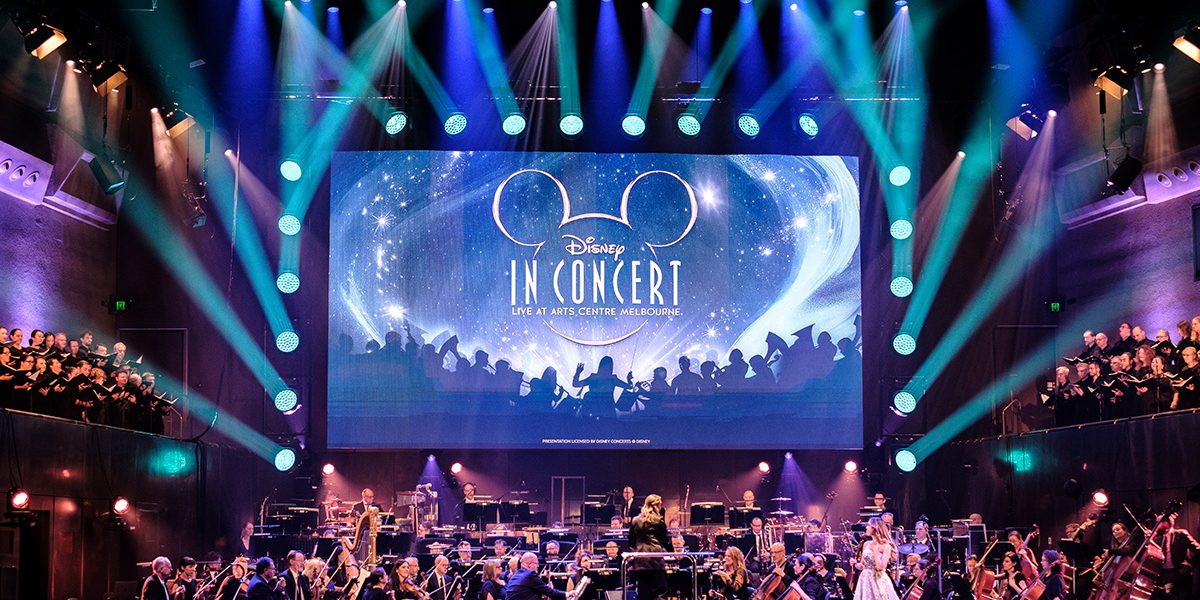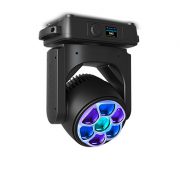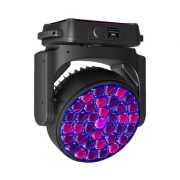When Ian Garrard, Managing Director of Intense Lighting, decided to replace some of his aging stock with new, large wash lights, he was delighted to discover the Ayrton Zonda 9 FX, a fantastic wash light that offers much more.
“It’s a more than capable wash light in itself, and then the effects engine within it is somewhat different from anything else,” he explained. “I then looked at the Ayrton Zonda 3 FX, and I like that they work well together.”
Intense Lighting has a large inventory of Ayrton products, and Ian says it has worked well over the years. Knowing that the brand is well-designed, constructed, and reliable is a factor in the purchase decision.
“It’s good for me, especially in serviceability, to have similar products in terms of the Zonda 3 FX and the 9 FX,” Ian added. “They’re just a different size, but I think it’s valuable for designers to have a similar output based on various form factors.”
One such designer is Peter Rubie, who was fortunate enough to bring a Zonda 9 FX home for a few days to get acquainted.
“I wanted to see how hard it would be to do the full pixel map, including the LiquidEffects™,” he said. “I liked that I could split up the addressing to have the pixel mapper layers on an entirely different universe, especially since that liquid layer is four universes big. It meant we could keep the real detail stuff, almost like a video layer, entirely on a separate system.
Disney in Concert, Live at the Sydney Opera House, presented by MM Creative Productions and the Sydney Symphony Orchestra, provided Peter with the perfect opportunity to utilise the Zonda fixtures alongside the Opera House’s package of Martin MAC Viper XIP, MAC Quantum Wash, and MAC Quantum Profiles. He specified 26 x Zonda 9 FX and 10 x Zonda 3 FX for the show. Times that by four universes, it’s a lot of universes to manage.
“I appreciate the manufacturers that make their DMX charts so that the main fixture is the first block of channels, and then the next set of channels is where all of those detailed pixel maps start,” commented Peter. “In this instance, I could use the console and just patch half a universe per fixture, which gave me full control of the main fixture and its 37 LEDs, which were mapped on both my Vista console and then HTP merged with the same LEDs in MADRIX.”
Peter decided to use MADRIX exclusively for the four universes of the Liquid layer, as the console was already handling a workload of about 32 universes of fixtures.
“After a bit of planning on how all the universes were routing and navigating the menus to address each of the parts of the fixture, it was pretty exciting to see some of the LiquidEffects™ I could create in MADRIX running across the face of the fixture,” he added “It is like a low-res video surface when dealing with that many pixels. When putting together the patch, I thought at one point, ‘ Gosh, it’s almost too many segments,’ but the reward came with the detail and smoothness that result from that pixel pitch. Each little part of that web breaks into approximately one-centimetre sections so that you can do some great stuff. MADRIX excels at creating content for this type of surface, and the possibilities for natural-looking and organic effects are generally greater and faster than those achieved by lighting consoles. It didn’t take long to create some interesting, funky patterns and video-like content.
The Zonda 9 FX were rigged on DQ F01 U-Frame ladders, five on either side of the screen, and then a border of eight along the top. Peter was framing the screen with a secondary screen in some ways, matching the colours and content of the Disney montages on the screen, so the concert lighting and stage feel were part of the video.
“Working with the producers, we wanted very much for this to be a concert experience complete with live singers, backed by the full symphony orchestra, rather than the focus being pulled to the screen all the time,” explained Peter. “Consequently, it was important for every element to feel cohesive, but still carry a theatrical nature. The U-frames were a deliberate choice here, allowing for easy screen framing. Additionally, as we shared the truss with the LED screen, it needed to go up row by row, just like the LED screen.”
Peter remarks that the 37 LEDs on the Zonda 9 FX are incredibly bright and that he achieved some nice, punchy, tight beams.
“They were so bright that, post-completing the previz of the show in my studio, I found myself often pulling back the levels in the actual room,” he said. “Also, because the dial of the fixture is so wide, it looks like a solid beam from the source of the fixture. A profile or spot tends to flare out, but not the Zonda.”
The Zonda 3 FX was five-a-side, positioned just above head height, where the box front pipes exit at the Opera House. Peter remarks that they are also punchy for their size. Additionally, because the pixel map and LED count are essentially the centre section of the Zonda 9 FX, programming is simpler.



